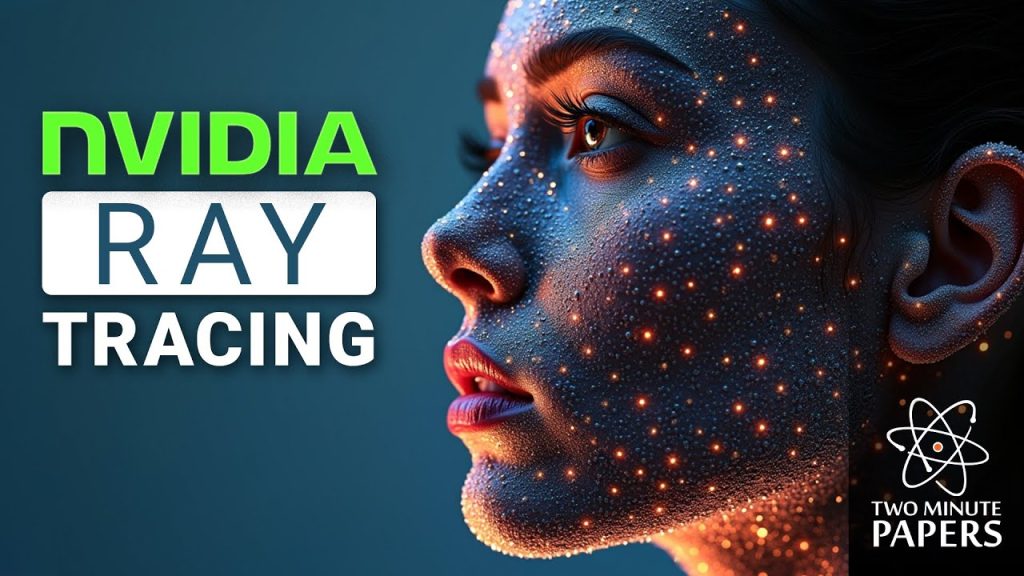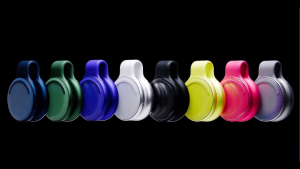NVIDIA’s Bold Experiment in Ray Tracing and Gaussian Splatting

NVIDIA is pushing boundaries. They’ve merged ray tracing with Gaussian splatting, a fusion many thought impossible. Ray tracing is known for stunning visuals but slow speed, while Gaussian splatting offers speed without quality.
Imagine two different worlds: one slow and beautiful, the other fast but less charming. NVIDIA wants to blend them. It’s a bold move that could change graphics forever. Let’s dive into their findings and experiments.
The Intriguing World of Ray Tracing
Ray tracing is a big deal in the graphics world. It simulates light paths for lifelike scenes. Imagine millions of light rays making video games and virtual worlds pop with realism. Whether it’s the sheen of a glass or the texture of marble, ray tracing breathes life into static images.
Yet, there’s a catch: it’s slow. Processing these light paths takes time and computing power. Sometimes, you wait seconds or even hours for a single frame. This lag is the main drawback.
Introducing Gaussian Splatting
Now, enter Gaussian splatting. Instead of 3D geometry, it uses particles. It’s quick, much like a fast-food drive-through for graphics. Real-time rendering is possible, but there’s a downside.
Specular reflections and light effects aren’t great. They look rough. Plus, it can consume a lot of memory, which is pricey. But it’s fast, making it valuable in its own right.
Combining Two Worlds
NVIDIA’s grand idea? Merge these techniques. Take the best of both: ray tracing’s detail and Gaussian splatting’s speed. But how is it possible?
They propose tracing rays on particles, not regular 3D objects. At first, this seems wild. Can particles provide the same depth and beauty?
Initial tests showed promise. The mix retains more details and reduces blurriness. That’s a big win. However, questions remain.
Experiment One: Synthetic Success
The first test looked at synthetic objects. These are controlled and predictable. Ray tracing on particles worked well here.
It’s a step in the right direction. Yet, real-world scenes are a different challenge.
The results were compelling, sparking optimism. This wasn’t just theoretical—it worked in practice.
Experiment Two: Real-World Challenge
The next experiment brought real-world objects into the frame. This upped the complexity but also the impressiveness.
Specular reflections stood out. These are challenging but crucial for realism. Seeing improved reflections was a breakthrough.
Details in various materials appeared sharper. From kitchens to outdoor scenes, the fidelity was impressive.
Not perfect, yet convincing. The allure of real-world rendering drew more believers.
Experiment Three: Memory Efficiency
Large-scale scenes were the third focus. These tests examined memory usage. Could this hybrid approach handle expansive graphics without getting bogged down?
The results were promising. Rendering huge scenes in real-time suggests efficient memory use.
This benefit could push NVIDIA’s method into mainstream applications.
Lower memory means cheaper graphics cards, a boon for gamers everywhere.
In a world where memory is everything, this efficiency matters.
Experiment Four: Advanced Illumination
The highlight was advanced light transport effects. And yes, reflections, shadows, and refractions.
Imagine a glass object in a scene bending light. This was the test’s climax.
It worked remarkably well. So well that expectations rose for future advancements.
Playing with material properties showed the technique’s versatility.
Such effects might soon be standard in games and virtual worlds.
Performance Metrics
Now, speed. Does this fusion move fast? The results are better than anticipated.
Frames per second ranged from 10 to 78. Depending on the scene, this was sometimes real-time.
Given past limitations of one frame per second, this is a leap forward.
NVIDIA’s work seems game-changing, offering speed without losing quality.
Old methods might soon be obsolete, replaced by this innovative blend.
Memory and Accessibility
Memory use is another win. The hybrid technique uses about half the memory that Gaussian splatting requires.
This lower demand might make advanced graphics more accessible to everyday users.
No need to invest in bigger graphics cards; the software handles it.
By reducing resource strain, NVIDIA hopes to broaden access to high-quality rendering.
Revolutionary? Perhaps, if these savings hold in broader applications.
The Road Ahead: Opportunities and Challenges
While not flawless, NVIDIA’s approach promises transformation.
Today, blurry patches remain. But with progress, they might soon disappear.
Innovation is iterative, and the team knows this. Future tweaks could refine and enhance.
The technology to render high-quality scenes fast might redefine what we expect from digital experiences.
NVIDIA’s fusion of ray tracing and Gaussian splatting is ambitious. Early tests hint at big changes in graphics. If improvements continue, it might shape our digital world. A hopeful watch for technology enthusiasts everywhere.
Source: Youtube





